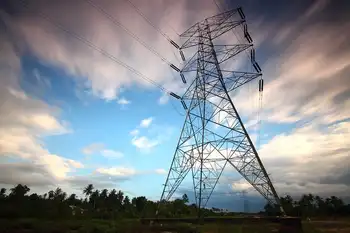Cloak of invisibility makes its first appearance
WASHINGTON, D.C. - Scientists are boldly going where only fiction has gone before — to develop a cloak of invisibility.
It isn't quite ready to hide a Romulan spaceship from Capt. Kirk or to disguise Harry Potter. But it is a significant start and could show the way to more sophisticated designs.
In this first successful experiment, researchers from the United States and England were able to cloak a copper cylinder with a device 30 centimeters in diameter made of 10 fibreglass rings covered with copper elements.
Like a mirage, heat causes the bending of light rays to cast a shadow, cloaking the road ahead behind an image of sky.
"We have built an artificial mirage that can hide something from would-be observers in any direction," said cloak designer David Schurig, a research associate in Duke University's electrical and computer engineering department.
In this case, researchers used microwaves to try to detect the cylinder. Like light and radar waves, microwaves bounce off objects, making them visible to instruments and creating a shadow that can be detected.
Cloaking differs from stealth technology, which doesn't make aircraft invisible but reduces the cross-section available to radar, so it is hard to track.
Cloaking passes the radar or other waves around the object as if it weren't there, like water flowing around a smooth rock in a stream.
The new work points the way for an improved version that could hide people and objects from visible light.
The cloaking of a cylinder from microwaves comes just five months after Schurig and colleagues published their theory that it should be possible.
In a very speculative application, study co-author David Smith added, "one could imagine 'cloaking' acoustic waves, so as to shield a region from vibration or seismic activity.''
Natalia M. Litchinitser, a researcher at the University of Michigan department of electrical engineering and computer science who was not part of the research team, said the ideas raised by the work "represent a first step toward the development of functional materials for a wide spectrum of civil and military applications."
Related News

Report: Duke Energy to release climate report under investor pressure
HOUSTON - One of America’s largest utility companies, Duke Energy, is set to release a report later this month that sketches a drastically changed electricity mix in a carbon-constrained future.
The big picture: Duke is the latest energy company to commit to releasing a report about climate change in response to investor pressure conveyed by non-binding but symbolically important shareholder resolutions. Duke provides electricity to more than seven million customers in the Carolinas, the Midwest and Florida.
Gritty details: The report is expected to find that coal, currently 33% of Duke’s mix, gone entirely from its portfolio by 2050 in a future…




